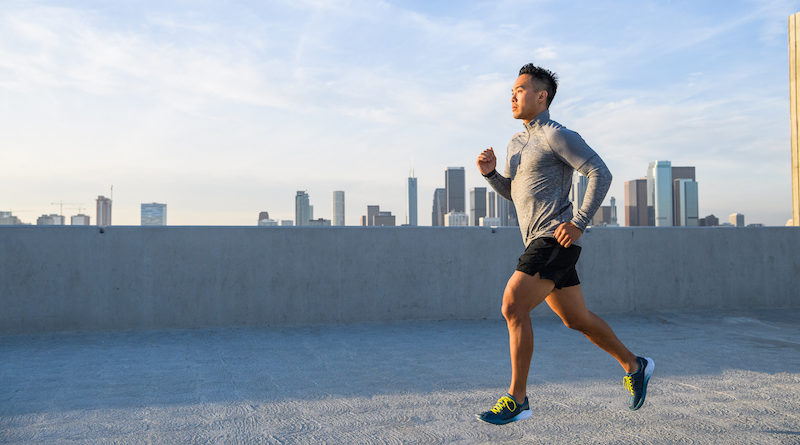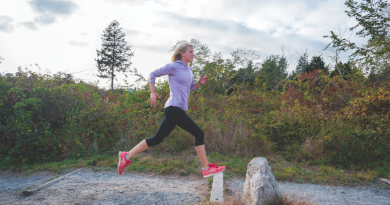How to Run Your Best (Not Your Fastest) Marathon
Use these tips on how to train for a great race and stay injury free.
BY LEE STANTON, P.T.
For years I lived by the clock. My best race was determined by the clock, or how I placed. As I matured as a runner, I realized that running your best marathon is not about running as fast as you can, but doing as well as you can on any given day.
After all the training that you’ve put in, it’s hard not to have some expectations when race day rolls around. Your goal may be to finish, to run the whole thing without walking, or to break a time mark. There are thousands of articles that will guide you to run your fastest marathon, but let’s get real: sometimes, running your fastest marathon just isn’t reasonable or safe.
The marathon will present you with a lot of variables that are out of your control. I’ve run in marathons in the high 80s in April, and in the low 40s in May. There is no way to predict the weather—but running your best marathon is about managing what happens that day so you can do your best with the conditions handed to you. That all starts with good preparation: training, a plan, and a good pair of shoes.
Your Shoes
Shoes are the most important piece of attire that any runner has and are not a place to skimp! One of the most common ways runners are injured is by improper footwear. Go to a local shoe store that specializes in running shoes and get a gait analysis. If you are working with a physical therapist, bring your shoes to your visits. Your PT can help you select the right running shoe for you.
The amount of mileage a runner can expect to get out of a shoe varies runner to runner and between shoe types. A common rule of thumb is that a running shoe will have about 500 miles of life in it. I encourage my runner clients to start breaking in a new pair of running shoes about six weeks before the marathon. That way, the shoe doesn’t have too much mileage on race day (I like mine to have about 100-200 miles). Also, having your feet get used to the seams on the shoe reduces the risk of blisters, a common problem for runners.
Assuming a moderate-to-long stride of just over three feet, a runner would be taking 1,700 steps per mile. That translates to 44,450 steps in the marathon. Doing anything that many times could predispose someone to getting hurt, which is why shoes are so important.
The best way to avoid blisters is to wear a good pair of dry shoes on race day. There are lots of other products out there that can help as well. Some runners will put Vaseline or other lubricants on their feet. I prefer a double layer sock called Wright socks. Whatever you decide, practice your plan before race day. Use your long runs as an opportunity to see what works best for you. If you have a pair of socks you want to wear on race day, wear them on your long training runs and in various weather conditions as well.
Your Training Plan
When selecting a training plan, choose one that will give you the number of miles necessary to achieve your goals while minimizing the risk of injury or overtraining. Runners should look for training programs that have a well- defined structure and that build slowly over time. Frequent rest/recovery weeks (every 2-4 weeks) have been shown to reduce the risk of injury while training. If you’ve run with a given program in the past and it hasn’t worked for you, don’t be afraid to try something new the next time around. Every runner is different and no program is perfect for everyone.
Your Coach
If you decide to use a coach, do not be swayed by their personal results. Instead, ask your coach to show you some examples of past athletes they have trained. Ask questions like how frequently their athletes get injured and how often they achieve or surpass their goals. A good coach will be happy to share this information with you.
Managing Your Injuries
As you train, you may get hurt. Annually, 65-80 percent of runners develop an injury. The difference between those who recover quickly and those who do not is how you manage your injury. An easy rule to follow is that if you have pain when you are running and it doesn’t stop within 30 minutes after your run, take a day or two off. Early use of ice is an easy and effective way to diminish some of the inflammation that can occur with training. If your symptoms persist after that point, contact a physical therapist to assess your injury. Work with a therapist with whom you already have a good rapport, or seek out a therapist who specializes in running-related injuries.
Weather
If you keep your ears open at any marathon expo, weather is the most commonly talked about topic. It’s also a factor that is completely out of your control. It is best not to waste too much energy worrying about it. Instead, plan ahead: Don’t be afraid to over pack your bag if you are traveling—better to be over-prepared. A runner hoping to have his or her “best day” shouldn’t have to worry about weather because they have a plan: “If it is sunny and hot, outfit A; if it is cold and rainy, I wear outfit B.”
Your Nutrition Plan
Messing up your race nutrition can be a painful and humbling lesson. Focus on taking in modest amounts of calories (100-300 cal/hour depending on pace and how well your stomach manages eating). Marathon nutrition plans should be practiced many times prior to race day, and once an effective plan is established, it is best not to deviate from it. Practice your breakfast plan so that you don’t experience GI distress several miles into your run.
Race Day!
On race day, keep your wits about you. There should be few surprises because you have thought through as many variables as possible. Stick to your race plan and avoid the temptation to be sucked into racing too hard too early (even if that guy next to you has had a heart rate monitor beeping for the past hour). If you still feel good after 18 miles, then go ahead and start racing. The runners around you at that stage of the race have earned the right to race you, and you to race them. In short, practice your race plan, stay flexible, and enjoy your race.
Lee Stanton, PT, is a physical therapist at the UVM Medical Center’s Orthopedics and Rehabilitation Center. He specializes in running mechanics and running-related injuries as well as multi-trauma injuries and total joint replacement.
Featured photo courtesy Hoka One One of the Evo Rehi.


